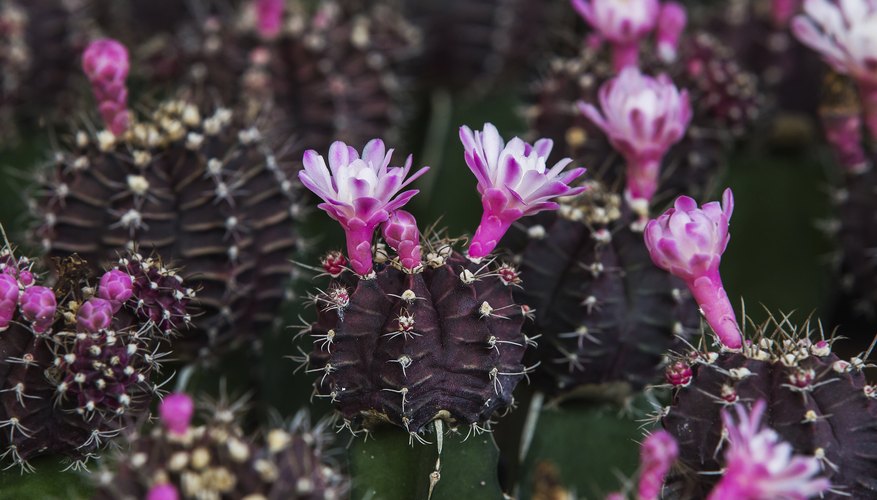Contrary to popular belief, the Easter or spring cactus and the Christmas cactus are actually two different plants. Native to Brazil, the Easter cactus features flat green stems called segments that resemble leaves. Beautiful flowers in a variety of colours including pink, purple and red bud between the segments. Unlike the rounded leaf margins of the Christmas cactus, the Easter cactus features sharp-bristled margins.
Pests
The Easter cactus is susceptible to damage by pests such as mealy bugs and scales. Female mealy bugs grow larger than the male counterparts, some up to 3mm in length, and lay 300 to 600 eggs per sac. Each egg is covered by a fluffy wax. The mealy bugs secrete a dark, honey-like substance that turns the plant black and they suck the sap from parts of the plant through their threadlike mouths, causing the cactus to look dry or shrivelled. These pests prefer Easter cacti located in warm spots and are commonly found at the base of stems. Scales are pests that damage ornamental plants including Easter cacti. They suck fluids from stems and leaves, and even roots in extreme cases, causing leaves to turn yellow or drop prematurely, or infected parts to die back. The best control for both types of pests is through repeated pesticide use.
- The Easter cactus is susceptible to damage by pests such as mealy bugs and scales.
- The mealy bugs secrete a dark, honey-like substance that turns the plant black and they suck the sap from parts of the plant through their threadlike mouths, causing the cactus to look dry or shrivelled.
Watering
Another common problem associated with the Easter cactus is overwatering the plant. Water the container soil deeply but infrequently. Water the soil until excess drains out through the drainage holes, and wait until the soil is dry to a depth of 2 to 3 inches before watering again. Insert your finger into the soil to determine whether it feels moist or dry before irrigating the plant.
- Another common problem associated with the Easter cactus is overwatering the plant.
- Water the soil until excess drains out through the drainage holes, and wait until the soil is dry to a depth of 2 to 3 inches before watering again.
Diseases
Like other plants, Easter cactus is susceptible to fungal and bacterial diseases that affect its growth, development and flowering. Fusarium cladophyll rot, caused by the fungus Fusarium oxysporum, appears as dark brown to black lesions of the edges of leaves covered by orange spots. Caused by the fungus Drechslera cactivora, the disease Drechslera cladophyll rot appears as black round lesions on the leaves of the plant. Phytophthora root rot, another disease the Easter cactus is susceptible to, causes stems of rot at soil line, foliage to turn grey or dull green and collapse of infected branches.
- Like other plants, Easter cactus is susceptible to fungal and bacterial diseases that affect its growth, development and flowering.
- Phytophthora root rot, another disease the Easter cactus is susceptible to, causes stems of rot at soil line, foliage to turn grey or dull green and collapse of infected branches.
To prevent diseases to the Easter cactus, limit watering to only when the soil's top 2 inches feel dry, and water early in the morning so the foliage is dry by evening; place in a spot where the temperature remains consistent at 15.6 degrees C during the plant's bloom period. Place the Easter cactus in a hanging basket if your area has slugs.
